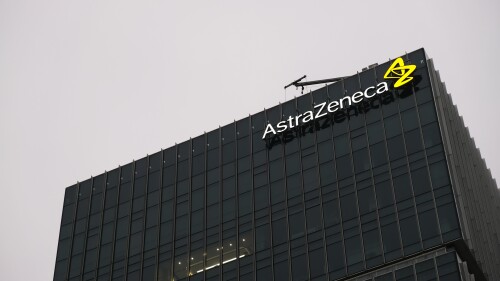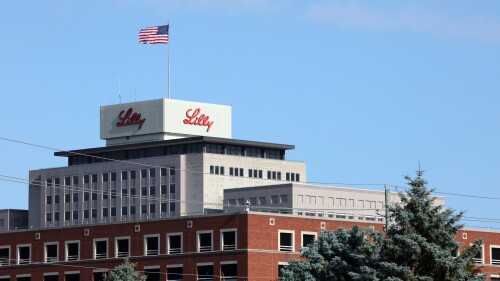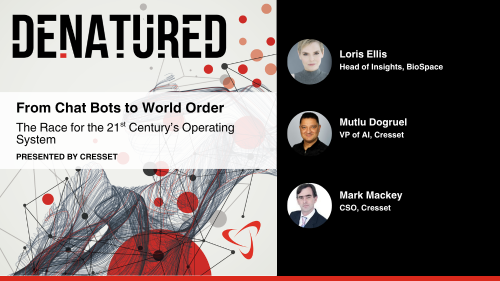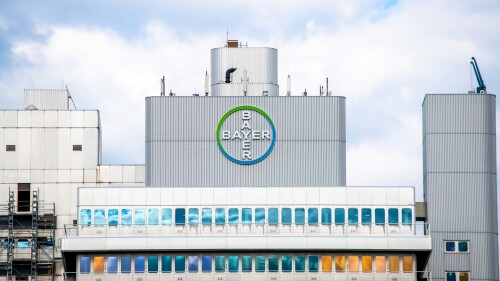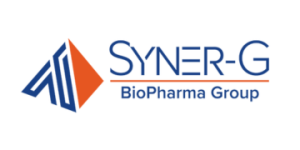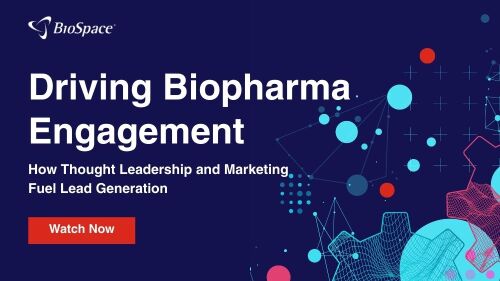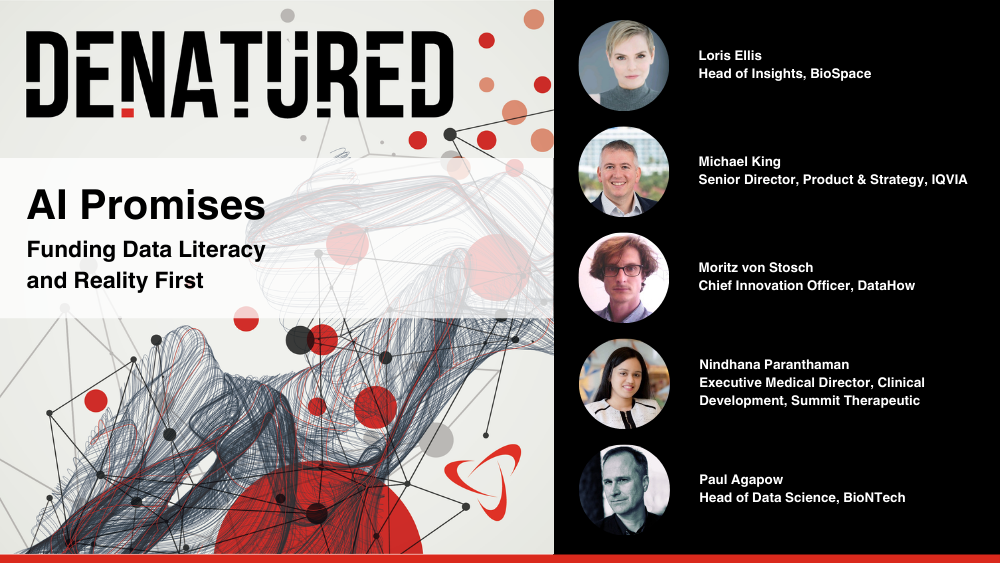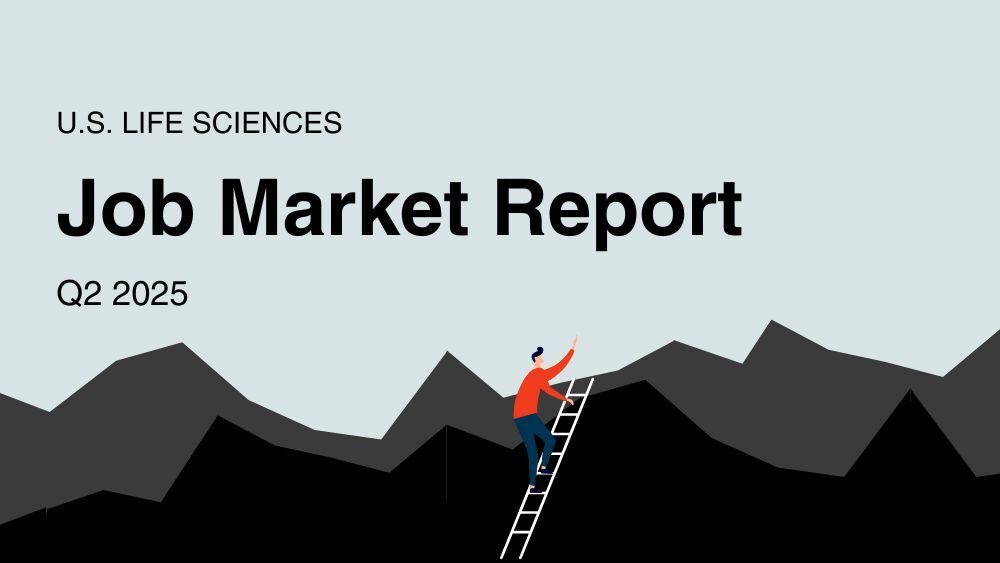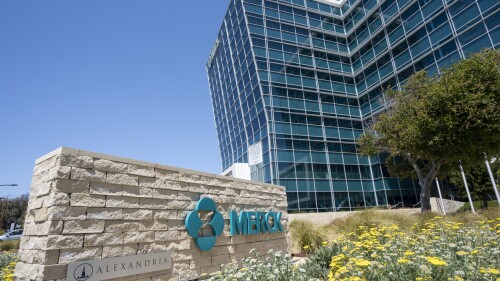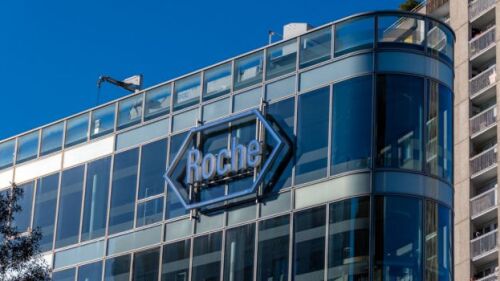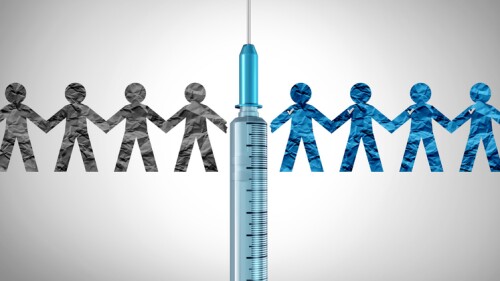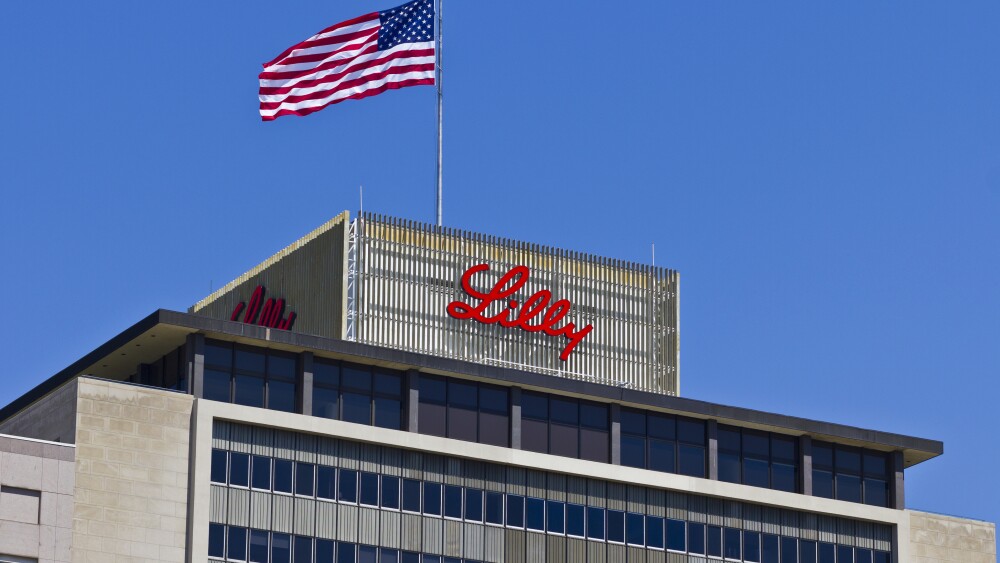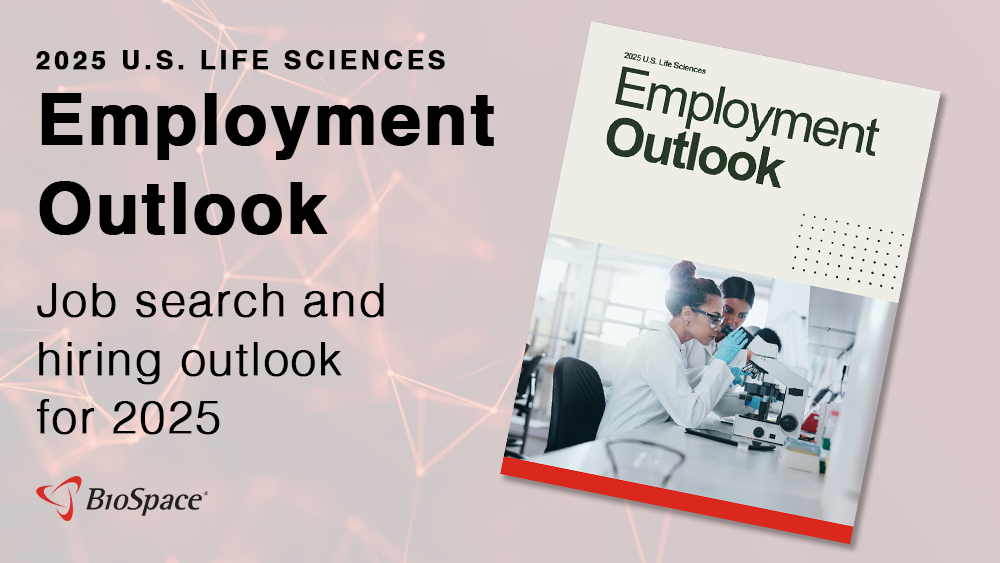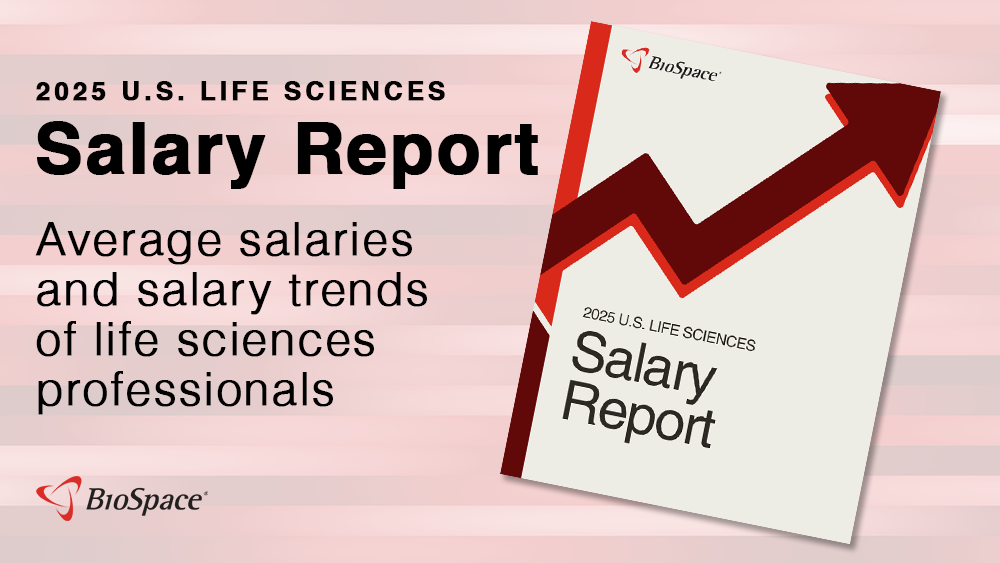Strand Therapeutics’ lead asset is STX-001, an intra-tumor self-replicating mRNA therapy that carries a payload expressing the immunomodulatory protein IL-12.
Eli Lilly’s orforglipron cut body weight to a lesser extent than rival Novo Nordisk’s semaglutide, falling into analysts’ bear scenario for the oral med. Executives brushed off the concerns and said the drug will still have a wide advantage on the market.
Sarepta did not hold an investor call for its second-quarter earnings report or provide an updated full-year revenue outlook.
In this episode presented by Cresset, BioSpace’s head of insights Lori Ellis discusses the emerging geopolitical battle for AI supremacy and global AI governance with Mutlu Dogruel, VP of AI and Mark Mackey, CSO of Cresset.
The small molecule drug, acquired by Jazz Pharmaceuticals in its $935 million Chimerix pick-up this spring, is intended for relapsed adult and pediatric patients with H3 K27M mutations.
The German giant has already trimmed more than 10,000 employees since initiating a massive restructuring initiative in July 2023. Bayer said even more cuts are coming as it weathers up-and-down sales across its portfolio.
FEATURED STORIES
Since 2016, the FDA has approved three disease-modifying treatments for spinal muscular atrophy, with several companies—including Novartis, Scholar Rock and Biogen—progressing novel candidates through clinical trials.
The FDA approval of Alnylam’s Amvuttra sets up a three-way race with Pfizer and BridgeBio, which both market transthyretin stabilizers for transthyretin amyloid cardiomyopathy.
With Keytruda, the best-selling drug in the world, facing the end of exclusivity in 2028, BioSpace looks at five drugs that have taken the leap off the patent cliff.
The explosion of GLP-1 weight loss drugs is reminiscent of the early days of PD-1 inhibitors, but key market differences suggest history may not repeat itself.
The ongoing conflicts between Ukraine and Russia, as well as Israel and Palestine, have sent ripples across various industries, including pharma. Medical science liaisons can help.
Mirador debuted last year with a massive $400 million and the goal of developing game-changing therapies for inflammatory and fibrotic diseases. The company aims to enter the clinic this year.
LATEST PODCASTS
In this episode, Lori and guests discuss practical approaches regarding artificial intelligence and investor and industry confidence in its current state.
BioMarin’s new business strategy leaves investors with questions; Lykos CEO steps down; Terns releases compelling data on oral weight loss candidate; and more.
Eli Lilly offers weight loss drug Zepbound directly to consumers while Novo Nordisk continues to struggle with supply challenges for its own GLP-1s. Meanwhile, gene therapies for retinal diseases target competitive market, and layoffs persist.
Job Trends
Merck KGaA, Darmstadt, Germany, a leading science and technology company that operates its Healthcare business as EMD Serono in the US and Canada, today shared updates on the company’s oncology pipeline and focused approach to the research and development of potential new medicines designed to improve the futures of people with cancer.
Subscribe to Genepool
Subscribe to BioSpace’s flagship publication including top headlines, special editions and life sciences’ most important breaking news
SPECIAL EDITIONS
In this deep dive, BioSpace explores the next big thing in obesity.
BioSpace did a deep dive into biopharma female executives who navigated difficult markets to lead their companies to high-value exits.
BioSpace data show biopharma professionals faced increased competition for fewer employment opportunities during the second quarter of 2025, with increased pressure from further layoffs.
DEALS
-
After four patient deaths, Kezar’s lupus trial is officially on hold, sparking investor Kevin Tang’s interest for acquisition.
-
Big Pharma can’t seem to get enough radiopharmaceutical biotechs. With Lilly, Sanofi and BMS chasing Novartis into the complex space, all eyes are on these specialty biotechs.
-
On the heels of Keytruda’s success in a Phase III perioperative trial for a disease where it had previously failed to improve event-free survival, Merck touts an I&I deal with UK biotech Mestag.
-
As traditional fundraising methods falter for smaller firms, the rise of royalty deals is reshaping how companies access capital, offering an alternative that bypasses equity dilution and debt.
-
The acquisition was featured Monday in Roche’s Pharma Day presentation, which also included projections of more than $3 billion in annual sales from three early-stage obesity and diabetes drugs.
WEIGHT LOSS
-
The company’s lead asset is a potentially first-in-class oral GLP-1 receptor agonist that has the potential to be dosed weekly, which according to CEO Khurem Farooq can help improve accessibility and affordability.
-
According to BMO Capital Markets, Medicare coverage of Lilly’s Zepbound opens the door to using secondary indications to secure CMS coverage for obesity drugs.
-
The FDA recommended maintaining a minimum of 5% weight-loss for drug developers seeking to establish the efficacy of their investigational obesity candidates.
-
BioSpace presents 25 noteworthy biopharma startups in ’25; analysts forecast stronger M&A as the J.P. Morgan Healthcare Conference kicks off next week; GLP-1s continue to expand their reach as Novo, Lilly fight against compounders; and a look ahead to five key FDA decisions in Q1.
-
Months after posting weight loss of 7.5% at 36 days for patients taking MET-097i, Metsera releases mid-stage results of just over 11% average body weight reduction at 12 weeks, with no plateau and a promising safety profile.
POLICY
-
The FDA and CDC have also recommended pausing the use of Ixchiq in seniors 60 years and older while safety investigations are ongoing.
-
As the Trump administration slashes funding for HIV-related research and infrastructure, Gilead, Immunocore and more are targeting the next goalpost: a cure.
-
With President Donald Trump expected to deliver a drug pricing order on Monday that Big Pharma and patient groups alike have railed against, the industry’s tumultuous ride is far from over.
-
Peter Marks, the venerable head of the FDA’s Center for Biologics Evaluation and Research, has been forced out. In this special edition of BioPharm Executive, BioSpace takes a deep dive into the instability of the HHS.
-
Yes, according to leading vaccine physician Paul Offit, who denounced the new placebo-controlled trial requirements for vaccines and sought greater clarity: “I don’t know what they’re talking about.”
BioSpace spoke with three CEOs: Alto Neuroscience’s Dr. Amit Etkin, Omega Therapeutics’ Mahesh Karande and Rain Therapeutics’ Avanish Vellanki about their companies’ employment growth.
The life science industry is growing rapidly, and many companies have announced expansions and job creation. Still, others have been forced to cut costs and slash jobs. For that and more, continue reading.
BioSpace spoke with Jay Johnson, the Director of Talent Acquisition for Orthopedics at Stryker, to find out what it takes to land a job in medical sales.
Since 2020, the life sciences industry has worked to rebound from the COVID-19 pandemic. But one sector’s growth has far outpaced the others–the biotech industry.
Location is everything when it comes to compensation in the life sciences. We’ve compiled data from BioSpace’s 2023 Life Sciences Salary Report to help you choose the best place to live and work.
Sales and marketing roles in the life sciences field are in high demand. To help with your job search, we’ve compiled a guide to sales and marketing jobs in the life sciences industry.
HOTBEDS
REPORTS
In this Employment Outlook report, BioSpace explores current workforce sentiment, job activity trends and the prospective job and hiring outlook for 2025, particularly as it compares to the previous year.
BioSpace’s third report on diversity, equity, inclusion and belonging in life sciences examines dramatic shifts in attitude around diversity initiatives.
CANCER
-
Exelixis’ next-generation tyrosine kinase inhibitor zanzalintinib is being tested for colorectal cancer, renal cell carcinoma and head-and-neck cancer, with several readouts slated for the second half of 2025.
-
Merck’s Keytruda may be the most talked about drug facing loss of exclusivity but it’s far from the only one, as several of the industry’s top-performers are losing key market protections. Some companies are more prepared than others.
-
Casdatifan’s progression-free survival benefits could help differentiate it from Merck’s Welireg in the kidney cancer arena, according to analysts at Truist Securities.
-
Ono picked up Romvimza—previously known by its active ingredient vimseltinib—from its $2.4 billion acquisition of Deciphera Pharmaceuticals in April 2024.
-
The failure in adjuvant melanoma could cause BMS and Opdualag to miss out on a market opportunity that is nearly twice as large as its current approved indication, according to analysts.
NEUROSCIENCE
-
Amidst a “renaissance” of interest in neuropsychiatry, Seaport’s executive team is taking nothing for granted.
-
J&J, GSK, Eli Lilly and others struck high-value transactions in the early days of biopharma’s annual kickoff conference. Meanwhile, Biogen proposes to acquire struggling neuro partner Sage, and obesity dominates discussions as Pfizer goes “all in.”
-
Lykos Therapeutics is currently working out ways to fund an additional Phase III study for its MDMA-assisted PTSD therapy following an FDA setback last year.
-
An OIG report zeroed in on what it said were three particularly problematic accelerated approvals: Biogen’s Aduhelm, Sarepta’s Exondys and Covis’ Makena.
-
JPM25 is in full swing as several pharma powerhouses—including Merck, Lilly and Amgen—detail their strategies for growth in the coming year.
CELL AND GENE THERAPY
-
Not exactly known for its dealmaking, Sarepta Therapeutics has thrown down a massive wad of cash to work with Arrowhead Pharmaceuticals on RNAi-based medicines.
-
The cancers were diagnosed 19 to 92 months after Skysona treatment.
-
Emboldened by technological advances and a deeper knowledge of glioblastoma, Merck, Kazia Therapeutics, CorriXR Therapeutics and others are targeting the often-fatal brain tumor.
-
Despite the death, the FDA has allowed Neurogene to forge ahead with the Phase I/II Rett syndrome trial, but using only the lower 1E15 vg dose of its investigational gene therapy NGN-401.
-
Novartis’ up to $1.1 billion acquisition of gene therapy specialist Kate Therapeutics fits with the pharma’s plan to expand its new modality pipeline to ensure long-term business sustainability.


